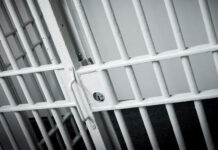CULLMAN – Alabama’s secondary tornado season is just around the corner, so now is a good time to begin reviewing severe weather safety and get a plan in place. While the chances of experiencing a tornado are low, they are not zero, so it is a good idea to know what to do in the event of a tornado watch or warning.
Spring is normally the season associated with tornadoes, but they can also form during the fall and winter. Secondary tornado season normally runs from late October to late December. According to the National Weather Service in Birmingham, between 2001 and 2014, fall tornadoes comprised 22 percent of all tornado occurrences, and were responsible for 6 percent of tornado fatalities. While violent, long- track tornadoes are more common during the spring, they can and do occur during secondary tornado season- the Dec. 16, 2000 EF 4 Tuscaloosa tornado was one such occurrence.
A tornado warning can be a nerve-wracking experience, but taking shelter and following some simple precautions will more than likely keep you safe. One of the most important steps to take is to be “weather aware.” During tornado season, pay attention to weather forecasts, to see if severe weather (including tornadoes) is mentioned. If it is, then closely monitor the weather on the day mentioned- periodically check forecasts for changes and updates, and have a reliable way of receiving warnings. A NOAA weather radio is a very good idea, but there are also plenty of apps you can download that will send you text message warnings. And as meteorologist James Spann of ABC 33/40 is fond of saying, never rely solely on outdoor warning sirens- they are not meant to warn people who are not outside.
In addition to monitoring the weather and having a reliable way to receive warnings, you should have a severe weather plan in place beforehand. Know what to do and where your safe place is in the event of a tornado warning. Know where your local storm shelters are if you plan to seek shelter outside of your home. A list of Cullman County’s storm shelters can be found on the Cullman Emergency Management Agency’s website. Weather kits are also a good idea- some of the recommended items for a disaster kit include: a flashlight and batteries, a first aid kit, NOAA weather radio, important documents, a whistle and enough food and water to last for several days. A more comprehensive list can be found at www.ready.gov, the Department of Homeland Security’s website for disaster preparation.
Be mindful of the difference between watches and warnings- a tornado watch means conditions are favorable for tornadoes, and a warning means a tornado has either been indicated by Doppler radar or has been sighted. And if you are under a tornado watch and a severe thunderstorm warning is issued, be weather aware- it is not unusual for severe thunderstorm warnings to be upgraded to tornado warnings.
So, what should you do if you find yourself under a tornado warning? The first precaution you should take is to be inside, in a sturdy building. Once you are inside, the next step is a basement or storm shelter if you have one. If neither of these is an option, go to the lowest floor and take shelter in an interior room, such as a bathroom or closet. Place as many walls as possible between you and the outside, and cover yourself with blankets, pillows and mattresses. In particular, pay attention to protecting your head- head injuries are a leading case of tornado fatalities. According to the Centers for Disease Control and Prevention (CDC), during the April 25-28, 2011 tornado outbreak, traumatic injury- including head injuries- was the primary cause of death. Wearing a helmet to protect your head is a very good idea.
Mobile homes should be avoided during a tornado warning. According to NOAA’s Storm Prediction Center, close to half of all tornado-related fatalities happen in a mobile home- between 2012 and 2015, 93 of 207 total tornado fatalities occurred in mobile homes, making them the most likely location for tornado fatalities. Mobile homes are not sturdy enough to withstand a tornado’s winds, and can easily be flipped or blown away. If you are in a mobile home, leave for a sturdier structure- plan ahead of time where to go if a tornado watch or warning is issued.
Vehicles are also not safe during a tornado. If you are driving and a tornado warning is issued for your location, stop and go inside a sturdy building. If this is not possible, taking shelter in a ditch is the next best option. Get as low as possible and cover your head. Do not take shelter under highway overpasses- it is a common misconception that overpasses are safe during tornadoes. In reality, they’re not- instead of providing safety, overpasses can act as wind tunnels, putting you at risk of being pulled out by the tornado’s winds.
Now is the time to start preparing for the fall severe weather season. Have a plan ready and know where your safe place is in the event a tornado warning is issued. Know the difference between tornado watches and warnings, and have a reliable way of receiving warnings. Know the basic safety precautions to take during a tornado warning, and always monitor the weather if severe weather is expected.
A Short Interview with Phyllis Little, director of the Cullman County EMA
What is the most important precaution people can take during severe weather season?
CCEMA asks that citizens be “Weather Aware.” In the southeast, we have two severe weather seasons- March- May (Spring) and October- November (Fall). Severe weather can occur at any time during the year. Tornadoes can occur in any month. Residents should always be aware of conditions that may be “ripe” for severe weather development. Be proactive and stay informed when severe weather is forecast. Prepare your home and family ahead of time. Have a family disaster plan and be sure that everyone in the family is aware of the plan. A NOAA weather radio is one of the best resources to have in your home. The weather radio is the best source of information about current weather conditions and any weather alerts that have been issued. Alerts can also be received direct from the National Weather Service on your smartphone by downloading the Cullman EMA app and/or the Baron Saf-T-Net app. These are free apps available for Android and IOS devices. Residents can register with Smart 911 to provide responders with critical information that will assist responders during an emergency. Some examples are physical descriptions of residents with dementia/Alzheimer’s or children with Autism who may have a tendency to wander away. Other examples include detailed description of the residence, information about homebound/bedbound residents, etc.
Where are Cullman County’s public storm shelters located?
Residents should refer to our Community Shelter List (see PDF below). Everyone should remember that pets are not allowed in shelters. Only certified service animals for the disabled are allowed in public shelters. Household pets are not allowed in the shelters for reasons of safety and liability. Also, no alcohol, no smoking, no drugs, no firearms or weapons are allowed.
What is the EMA’s procedure for dealing with tornado watches and warnings?
The Emergency Operations Center (EOC) is activated for all tornado watches and warnings. CCEMA will disseminate alerts on the public safety radio frequencies used by local agencies; alerts will be distributed to all critical personnel by text and email. Staff will monitor the weather conditions and update alert information as needed. CCEMA staff will remain on duty in the EOC until the watch or warnings have been canceled by the National Weather Service or have been allowed to expire.
If a tornado warning is issued for Cullman County, the Outdoor Warning System (tornado sirens) will be activated. Current policy mandates that ALL sirens in the county are activated for warnings issued for Cullman County. If you hear a siren or receive an alert on your phone or NOAA Weather Radio, turn on your TV or radio for additional information.
What should people do if they are struck by a tornado?
Residents should always take safety precautions.
- Contact 911 especially if injuries have occurred or assistance is needed.
- Stay away from downed power lines.
- Be careful when entering a damaged structure. Make sure the walls are in place and the foundation is sound.
- Watch out for debris- especially broken glass.
If the damage is to a residence and assistance is required or injuries have occurred, residents should contact 911 for immediate assistance. Residents who experience damage from a tornado or high winds that does not require emergency assistance can contact the CCEMA office at 256-739-5410 to report the damage. If possible, CCEMA staff will come out and do an assessment and take pictures of the damage.
What supplies should people have on hand for tornado season?
Having a disaster supply kit ensures that you will have the necessary supplies when an emergency arises.
- Water- 1 gallon per person per day for at least three days (store in tightly sealed, non- breakable containers and change water every six months)
- Non-perishable food to last each family member at least three days (canned or boxed that requires little preparation. Don’t forget to have a manual can opener.) Replace food every six months.
- Include food for infants and family members with special diets.
- Battery- powered radio
- Flashlights
- Spare batteries
- Re-sealable plastic bags and plastic garbage bags
- Paper plates, cups, plastic utensils
- Washcloths, towels, waterless hand sanitizer
- Change of clothing, extra pair of shoes & socks for each family member
- Blanket or sleeping bag for each person
- Personal identification
- Copies of birth and marriage certificates, inventory of household goods, insurance information, bank account numbers and other important documents
- Extra car and house keys
- Prescription medications
- Basic first aid kit
Information to develop a family emergency plan and assemble a disaster supply kit is available at www.ready.gov, on the Cullman EMA website under the “Be Prepared” tab, through links available on the CCEMA website at www.cullmanema.org or by contacting Cullman EMA.
Community Shelter List 02012016 by cullmansense on Scribd
Copyright 2016 Humble Roots, LLC. All Rights Reserved.



















